How Long Do Hot Tubs Take to Heat Up?
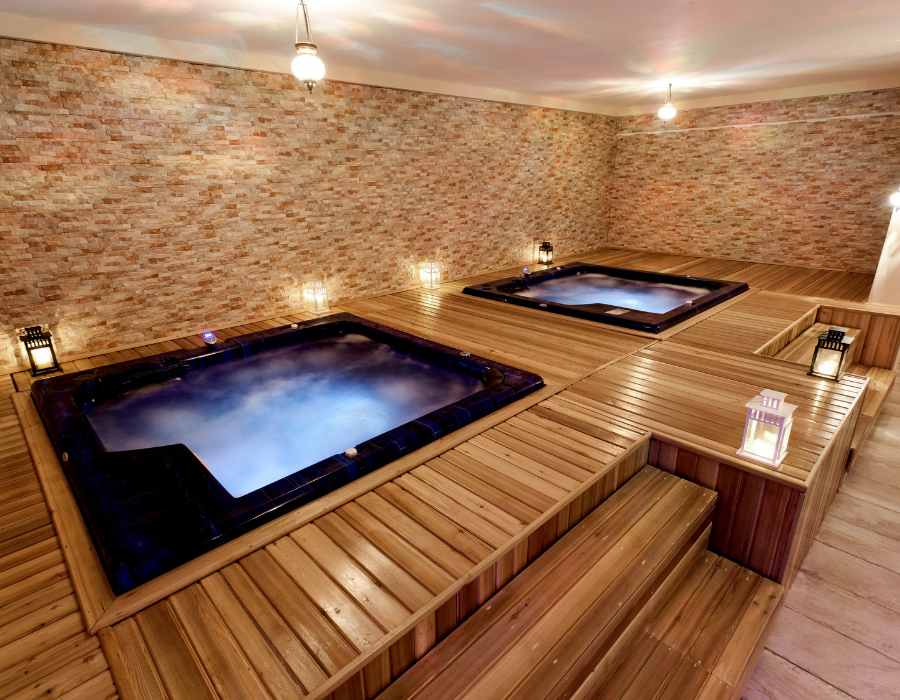
If you’ve ever eagerly awaited a relaxing soak in your hot tub, you know the anticipation of waiting for the water to heat up can be quite an ordeal.
Understanding how long it takes for hot walk in tubs to heat up and the factors that influence this process can help you manage your expectations and optimize your setup for quicker heating times.
Factors Affecting Heating Time
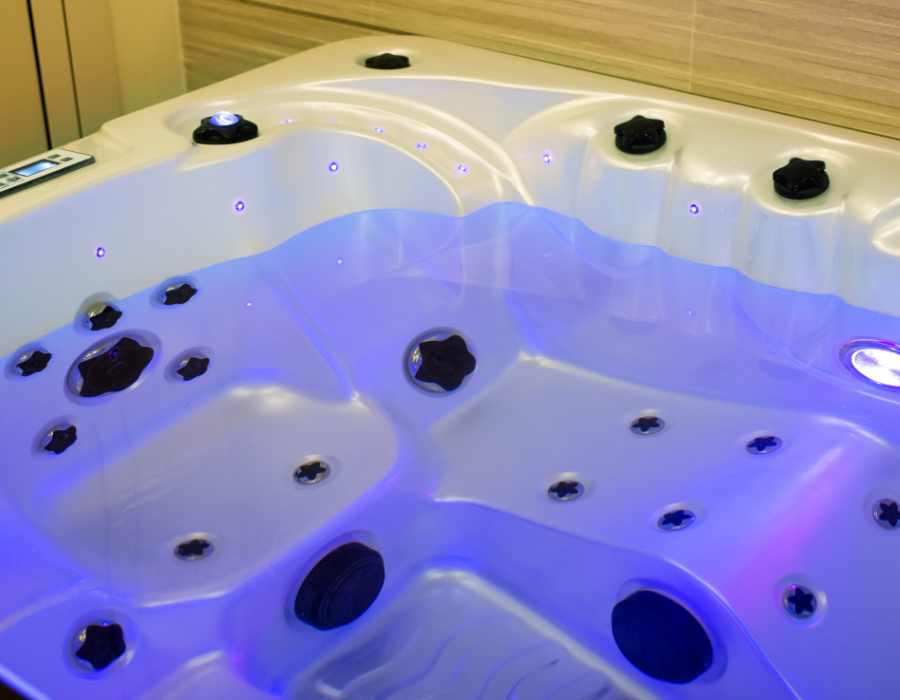
Water’s Starting Temperature
The initial temperature of your water plays a significant role in determining how long your hot tub will take to heat up. If you’re starting with fresh water from a garden hose, it’s likely to be much colder, especially in winter months.
Cold water naturally takes longer to heat compared to water that’s already been pre-warmed or previously heated. For most hot tub owners, the starting temperature can be a game-changer in their heating process.
Ambient Temperature and Outside Conditions
Ambient temperature, or the temperature of the air surrounding your hot tub, has a substantial impact on heating times. On a warm, sunny day, your hot tub’s water will heat faster compared to a cold, windy night.
Cold air can cause heat loss, making the heating process longer. Placing your hot tub in a sheltered spot with a natural wind barrier or in a natural alcove can protect it from cold air and windy conditions, thus speeding up the heating time.
Hot Tub’s Components and Heating Elements

The efficiency and condition of your hot tub’s components, particularly the heating element, are crucial to how quickly your hot tub heats up. Modern hot tubs come with more efficient heating elements designed to heat water faster.
However, the overall design of the hot tub, including the hot tub’s base and the quality of its insulation, also plays a role. Ensuring that all components are well-maintained and functioning properly can significantly reduce the time it takes for your hot tub to reach the desired temperature.
Hot Tub’s Cover and Insulation
Using a high-quality hot tub cover is one of the most effective ways to reduce heat loss and speed up the heating process. A well-insulated cover traps heat inside, preventing it from escaping into the air. Insulated covers with thermal spa blankets and tapered edges provide additional protection against heat loss.
Investing in more insulation, such as an insulated sheet, can make a big difference, especially in colder climates. The hot tub’s cover should be used whenever the hot tub is heating to ensure maximum efficiency.
Water Capacity and Flow Rate
The size of your hot tub and its water capacity also affect how long it will take to heat up. Larger hot tubs with more water naturally take longer to heat compared to smaller ones.
Additionally, the flow rate of water into your hot tub, whether through a garden hose or another source, can influence the heating time. Ensuring that water flows freely and without obstruction can help in maintaining an even temperature distribution, reducing cold spots and pockets that could prolong the heating process.
ALSO READ: How Long Do Hot Tubs Last?
Typical Heating Times of Tubs
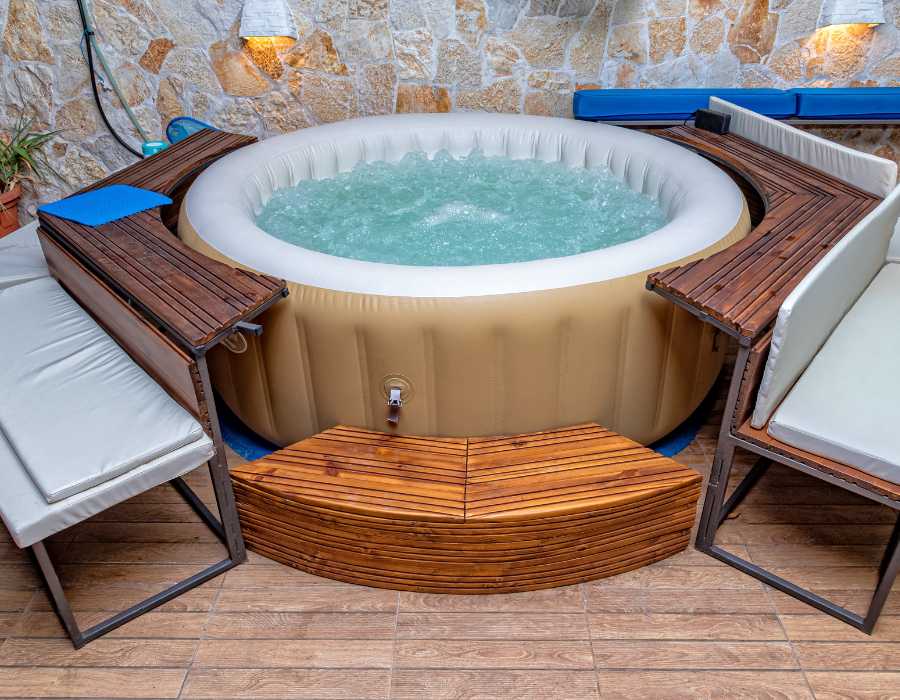
Most hot tubs generally take anywhere from 4 to 8 hours to heat up to the desired temperature, depending on several factors. Starting with cold water at around 55°F, the hot tub’s water typically heats up at a rate of 5 to 10 degrees Fahrenheit per hour.
Therefore, if you’re aiming for the standard hot tub temperature of 100°F to 104°F, you’re looking at approximately 6 to 8 hours of heating time. However, these times can vary significantly based on the ambient temperature, the efficiency of the hot tub’s heating element, and the insulation provided by the hot tub’s cover and components. The best hot tubs are those that combine efficient heating elements, proper insulation, and strategic placement to optimize heating times and energy consumption.
Cost Considerations

Heating a hot tub involves energy costs that can add up over time. The longer it takes to heat your hot tub, the more energy it consumes, impacting your overall running costs. Here are some tips to help manage and reduce these costs:
Use a high-quality insulated hot tub cover
Hot tub covers help retain heat and reduce the amount of time and energy needed to heat the water.
Maintain your hot tub regularly
Ensure that all components, especially the heating element, are functioning efficiently.
Consider a thermal spa blanket
Placing one on the surface of the water can reduce heat loss.
Heat during off-peak hours
Electricity rates are often lower during non-peak times, which can save on costs.
Optimize your hot tub’s location
Positioning your hot tub in a sheltered spot can reduce heat loss due to cold air and wind.
By implementing these measures, you can enjoy your hot tub while keeping your energy bills in check.
ALSO READ: How Much Do Hot Tubs Cost [2024 Price Guide]
Optimizing Your Hot Tub Setup for Faster Heating
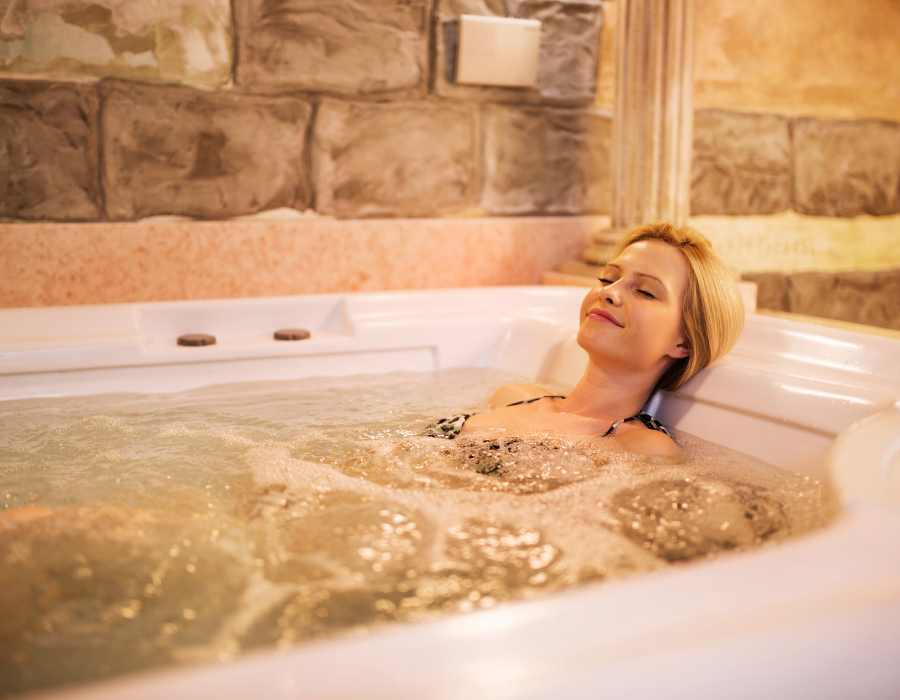
Here are a few tips to help you achieve the right temperature without excessive waiting times:
Ensure Proper Water Flow
Ensuring that the water in your hot tub can flow freely is crucial for even heating. Check that the jets and filters are clean and functioning correctly to prevent any cold pockets from forming. This allows the water heater to distribute hot water more evenly, making your hot tub warms faster.
Use a Wind Barrier
Placing your hot tub in a location that is sheltered from the wind can make a huge difference in how quickly it heats up. Windy spots can cause the hot tub to lose heat faster due to increased exposure to cold air. Creating a wind barrier using natural elements like bushes or fences can help trap hot air and maintain a stable air temperature around the hot tub.
Regular Maintenance of Heating Elements
Regularly maintaining your hot tub’s water heater and heating elements ensures they operate at peak efficiency.
A well-maintained heater will warm your hot tub faster, whereas neglected components might heat slower. Checking for and removing any calcium buildup or debris can improve the heater’s performance.
Optimal Water Temperature Settings
Set your water heater to the ideal temperature for your needs. While it might be tempting to set it to the highest setting, gradually heating the water can conserve energy and extend the life of your hot tub’s components.
Typically, the ideal temperature for a relaxing soak is between 100°F and 104°F. If you’re wondering how hot do hot tubs get, most models have a maximum temperature setting of 104°F for safety and comfort.
Pre-Heating in a Warmer Environment
If possible, begin heating your hot tub water during the warmer parts of the day. The warmer air temperature can aid the heating process and reduce the time it takes to heat up a hot tub. Starting the heating process in the afternoon rather than the evening can make a significant difference.
Why does my hot tub take longer to heat up in winter?
In colder months, the outside temperature is lower, causing the hot tub to heat more slowly. Cold air increases heat loss, requiring the heating element to work harder to raise the hot tub’s temperature. Using an insulated cover can help trap heat inside and reduce heating time.
How can I reduce the hot tub running costs while maintaining a warm temperature?
To reduce hot tub running costs, keep your hot tub’s temperature consistent, avoid drastic temperature changes, and use a high-quality insulated cover to trap heat inside. Additionally, ensuring regular maintenance of the heating elements and other components can improve efficiency and reduce energy consumption.
What can I do to make my hot tub heat faster?
To make your hot tub heat faster, start with warm water if possible, use an insulated cover to retain heat, and ensure your heating element is functioning efficiently. Placing your hot tub in a sheltered area away from cold air and wind can also help maintain a warm temperature more quickly.
How does the size of the hot tub affect the heating process?
The size and water capacity of your hot tub significantly impact how long it takes to heat. Larger hot tubs with more water volume will take longer to reach the desired temperature compared to smaller ones. Using a powerful heater and maintaining good insulation can help manage heating times for larger hot tubs.
Are there industry standards for hot tub heating times?
While there is no strict industry standard, most hot tubs in the hot tub industry are designed to heat at a rate of 5 to 10 degrees Fahrenheit per hour under optimal conditions. Factors such as the efficiency of the heating element, hot tub insulation, and ambient temperature can affect this rate. Regular maintenance and proper setup can help your hot tub achieve these heating times efficiently.
Final Remarks
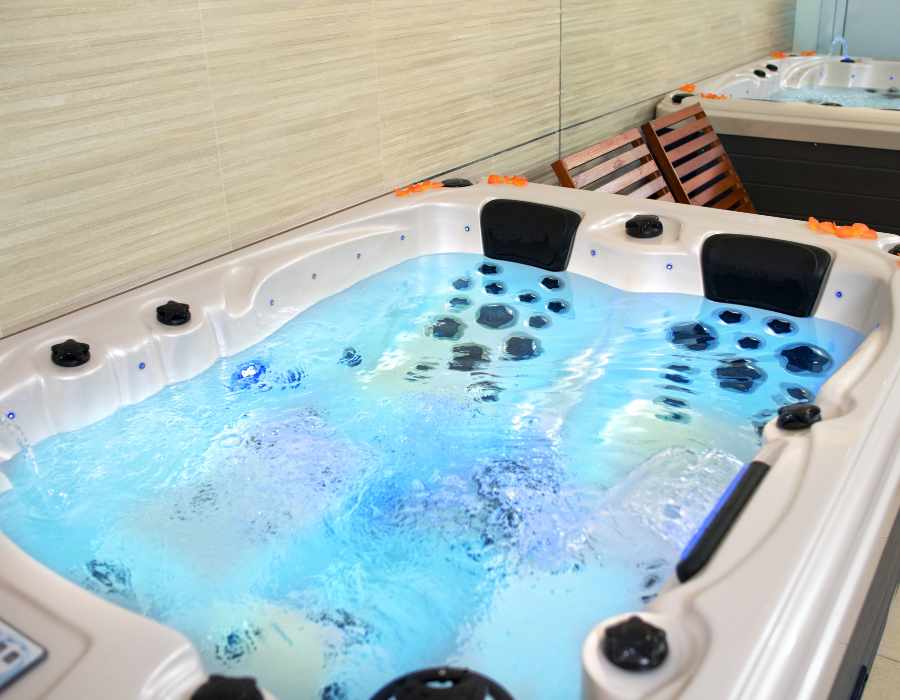
Heating your hot tub efficiently is all about understanding and managing the various factors that influence heating time. From the water’s starting temperature and ambient conditions to the quality of your hot tub’s components and insulation, each aspect plays a crucial role.
By optimizing these factors, you can ensure a quicker, more cost-effective heating process, allowing you to enjoy your hot tub whenever you desire.
Ready to enjoy a perfectly heated hot tub without the long wait? Fairhope Walk-in Showers and Tubs specializes in providing high-quality hot tubs with efficient heating systems and top-notch insulation to ensure your hot tub heats up quickly and maintains the perfect temperature.